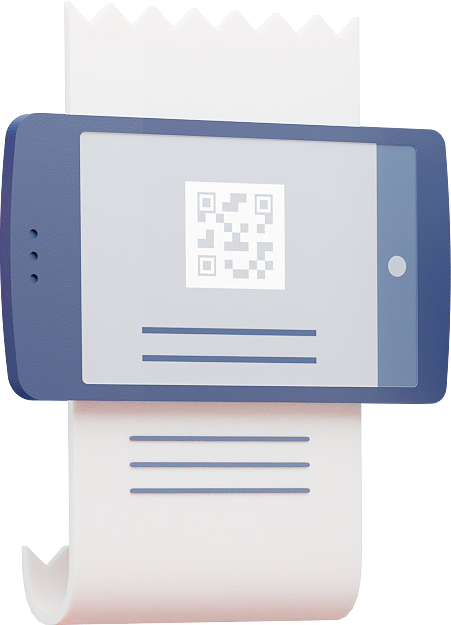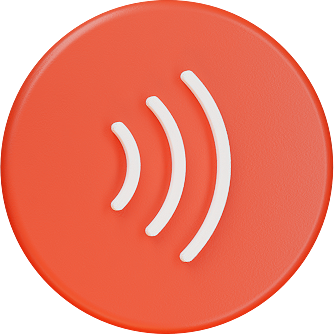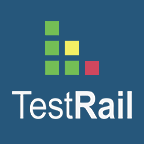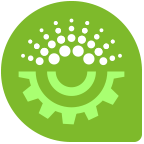Toast + Atlassian
The developers are already using Jira, so it didn’t make sense to use another tool for service requests that needed integrations”





0
TBD
Annual cost savings by moving to Atlassian Cloud
Industry
Financial technology
Location
Headquarters in Boston, MA
Number of Users
1,500
Atlassian Products
Apps Used
Toast helps restaurants stay alive and thrive with Jira Service Management
Restaurants count on Toast’s point-of-sale solutions to deliver seamless guest experiences – and get paid. The company had pieced together various tools to support their agile, ITSM, and DevOps practices to ensure they could deliver for their customers. But as they scaled, it became harder to keep track of everything and collaborate. By centralizing onto Atlassian and implementing better integrations between Engineering and DevOps, Toast gained more visibility into their teams' work, resolved bottlenecks in their processes, and accelerated incident resolution times.
Restaurants serve up the ultimate analog experience. The act of dining together is a near-universal hallmark of social bonding, fostering human connectedness while engaging all our physical senses. But behind the scenes, restaurant owners and employees work hard to meet sky-high customer expectations. Getting it right takes an immense amount of time, money, and effort – and finicky guests aren’t afraid to go elsewhere if even the smallest detail is off. This explains why 60% of restaurants don’t make it past their first year, and 80% go out of business within five years. The odds are stacked against them, but having the right technology can help them succeed and adapt to any challenge – even a global pandemic.
Microsoft’s CEO once said, “Every business is a software business,” and restaurants are no exception. Technology was already seeping into many parts of the restaurant experience, from booking reservations online, to providing digital menus, to replacing traditional registers with mobile payments. In the wake of COVID-19, software went from a luxury to a necessity. As sales fell by up to 80% in many markets, restaurants scrambled to add online or mobile ordering, touchless payments, and more. And Toast was there to help them evolve in record time.
While the pandemic pushed the digital transformation trend into overdrive, Toast has been helping restaurants on that journey for years. It’s part of their mission: to put restaurants first and provide modern point-of-sale technology that helps them delight their guests, do what they love, and thrive. Restaurant owners and operators count on Toast to deliver a seamless guest experience and get paid. In the rare situations when their system isn’t working as intended, Toast needs to know about it and fix it ASAP, while keeping their customers in the loop.
The company’s Engineering team had pieced together various tools to help with ad-hoc incident management, but as they scaled, it became more difficult to keep track of incidents, notify customers, and work together on quick resolutions. By centralizing onto the Jira Service Management platform, Toast has enabled their teams to offer faster service and delivery, innovate and collaborate more, and make their work more visible – all while expanding their agile, ITSM, and DevOps practices. Although running a restaurant is far from simple, Toast is leveraging Atlassian to make life easier for employees, customers, and their guests.
Using Jira Cloud helps us have one less backend system that needs operational support and maintenance. We also have offices in multiple countries, so using the cloud version of Jira and Confluence helps with performance since we don’t have a local server.”
Ken Siskind
Engineering Program Manager
An agile evolution paves the way for DevOps and ITSM
As Toast scaled from a startup to an established fintech player, they also worked on making their approach more agile, with the goal of accelerating their innovation and delivery processes. As the company grew, cracks within their internal processes and platforms began to show. At the time, developers communicated throughout the day in person and via Slack, but there wasn’t a formal way to pass requests back and forth between Engineering and the DevOps team, which is responsible for operating Toast’s production environment. They had implemented Jira for ticketing and Confluence for documentation from the beginning, then adopted an assortment of other tools over time: Google Sheets for project management, ServiceNow for employee service requests, Opsgenie for incident response, and more. As the number of requests grew, developers started working more closely with the DevOps team. While this collaboration helped accelerate velocity, DevOps was getting overwhelmed with Slack requests to access new services and gain permission to deploy new code.
DevOps did their best to keep up and keep track of everything, but as Toast’s employee and customer base grew, they reached a tipping point. To stay true to their mission, maintain exceptional service while scaling, and continue modernizing their practices, Toast needed to get out of their disjointed system and into a more standardized, integrated solution.
“When I started at Toast, Engineering had been using Jira for project tickets, but there wasn’t a very formalized way to request service from the DevOps team. Developers would just send a Slack message to DevOps and say, ‘Hey, can you do this for us?’” recalls Ken Siskind, Engineering Program Manager. “That was one of the things I wanted to change...We needed to get things out of people's heads, out of drive-bys, and out of Slack.”
Ken knew Toast’s developers would welcome a new system, but they didn’t have time for exploration or migration, so he took the lead. Ken had implemented Jira Service Management at past jobs, and since the team was already working with Jira Cloud, Confluence Cloud, and Opsgenie, centralizing onto Atlassian was the obvious choice. “I knew tickets would need to switch back and forth from the DevOps team to Engineering. [The new solution] also needed to be easy to set up and flexible to customize. The developers are already using Jira, so it didn’t make sense to use another tool for service requests that needed integrations,” Ken explains.
With everyone in agreement about standardizing onto Atlassian, Ken and his team started implementing Jira Service Management as the central platform across Engineering and DevOps. Developers enjoyed having one place where they could easily submit requests to the production environment, and DevOps could visibly track all of those requests and deliver even better service. As Toast continued growing, and as the team saw how much faster and easier it was to manage requests with Atlassian, they added Statuspage to round out their incident management makeover.
Working faster and better together
Today, Toast has resolved much of the friction between Engineering and the DevOps team, and they feel more confident than ever that they have the modern practices, processes, and platforms in place to keep restaurants happy.
Whenever a customer issue is identified through alerting or customer calls, Toast triggers their incident alerts powered by Opsgenie if the problem is widespread. Stakeholders in Engineering, Customer Care, and Restaurant Success (the company’s account managers) are notified so they can come together to discuss the incident, start swarming toward a resolution, and evaluate if it’s worth notifying customers through Statuspage. “If it’s happening in a space with minimal adoption, for example, we may not notify [customers] or we may opt for more targeted delivery,” explains Jeffrey King, Senior Engineering Program Manager. “If it’s a problem with our core platform or payments affecting all customers, then we’ll probably post a message on Statuspage using one of our templates so we have the right language to articulate it. It’s always a case-by-case basis because we don’t want to cause false alarms.”
Once developers collaborate in Jira to fix the problem, they complete a root cause analysis (RCA) to identify the source of the incident, discuss how to avoid recurrence, and document the change. This information is stored in run books called “recipes” in Confluence, which are easy to search for in the unlikely event an incident reoccurs in the future.
For changes that may impact multiple teams, Toast leverages the Jira platform for change management and communication. Developers create a ticket with custom fields to capture all the details of the proposed change, then review this information with stakeholders for approval. Emergency changes are discussed and released immediately. Standard changes go through the traditional review process and extensive testing using Jira and Marketplace apps like TestRail, before being rolled out in phases.
The team also uses the Jira Misc Workflow Extension app to standardize workflows like these and display required fields when tickets transition to new states, along with JQL Search Extensions for Jira to create better reports about bugs and underlying issues.
Connecting Atlassian solutions with each other and Toast’s other business systems has helped increase efficiency, visibility, and collaboration even more. “The integrations are key to helping different teams have one place to see related information about work in progress,” Ken says. “Developers can quickly link out to test plans in TestRail, see any related Sentry errors, or see the status of pull requests in our code repository, and our Support organization can link Salesforce cases to Jira tickets for engineers to work on.”
With one integrated system, employees can work together better and faster than before, which is trickling down into better, faster service and innovation for their customers.
With Confluence and Jira, you can search for what you’re looking for, find that knowledge at your fingertips, and keep a running record of truth.”
Maria Loughlin
VP Engineering and Business Systems Lead
Enabling innovation in the cloud
Just as Toast’s customers rely on their point-of-sale software to do their job, their employees rely on Atlassian cloud solutions to do theirs. To ensure Toast’s people can collaborate and work without interruption, the Business Systems team has adopted practices and tools for internal incidents and changes similar to those Engineering uses externally. “At the rate at which we’re innovating as an organization, if we introduce errant code, it seriously derails us from achieving our goals,” says Maria Loughlin, VP Engineering and Business Systems Lead.
Having one standardized, shared system has also made it easier for technical and non-technical teams to collaborate and see what the others are working on. Ken says, “It’s nice to have visibility into different projects, like Customer Support can look in Jira and see the status of tickets they’ve escalated.”
With teams distributed around the world, Ken believes working in the cloud has been key for supporting innovation and efficiency. “Using Jira Cloud helps us have one less backend system that needs operational support and maintenance. We also have offices in multiple countries, so using the cloud version of Jira and Confluence helps with performance since we don’t have a local server,” he says.
As collaboration has grown between locations, the Engineering and DevOps teams, and other departments, more groups have chosen to adopt Atlassian to bridge silos and work faster. In addition to using Confluence in various departments throughout the company, individual teams like Education have implemented Jira Service Management and Jira to invoke service and manage projects. Ken even created a service desk so people can request help from him personally.
Service desks have also created unexpected improvements, such as easier performance and activity tracking to build business cases. Ken points to the DevOps team’s experience trying to manage service requests with Slack as one example. When Engineering was using Slack to invoke service, DevOps didn’t have a single source of truth to track volume or provide an organized response. Now with Jira Service Management, they can not only manage a barrage of requests with ease, but also make their work more visible to inform key decisions.
“With work centralized and visible on Jira Service Management, we could more clearly see that the team managing our production environment was overwhelmed with tickets,” Ken explains. “We made a successful business case to hire more staff that improved the flow of work.”
From increasing efficiency and visibility, to guiding business decisions, Toast is leveraging many facets of Atlassian to fuel their stellar service and impressive innovations.
The integrations allow us to keep folks in their own workspace while ensuring everything is working at a program level.”
Maria Loughlin
VP Engineering and Business Systems Lead
A not-so-secret ingredient
Serving up seamless payment solutions for one of the most competitive industries in the world is no easy feat, but with Atlassian, Toast has the utmost confidence in their ability to deliver.
“Atlassian has been great for building communication, transparency, and confidence in what we’re doing,” Maria says. “Before, we were using Google Sheets to create Gantt charts and task lists. They’re very collaborative if you have access to them, but if you don’t, you're not going to be able to find the link. With Confluence and Jira, we created an on-demand, company-wide knowledge base. Plus, the integrations allow us to keep folks in their own workspace while ensuring everything is working at a program level.”
Ken and Maria are both excited to continue building on this progress by expanding their Atlassian ecosystem, ITSM, and DevOps practices. Maria says, “We’re exploring more integrations with Slack and automations within the Atlassian platform so people can stay where they are and collaborate more. For example, our Enterprise Business Applications team has created a workflow that automates the administrative steps within our software development life cycle. This streamlines the overall release process, with the end goal being continuous delivery. We’re not there quite yet, but we’re shipping usable code for different groups every single day.”
With each rollout and each process improvement, Toast is empowering their employees and customers to deliver on their missions. And with Atlassian as their not-so-secret ingredient, they feel fully equipped to not just survive, but thrive.



